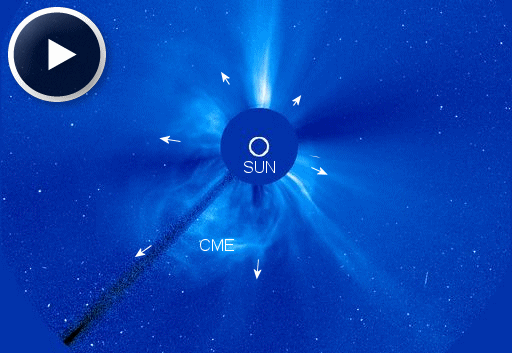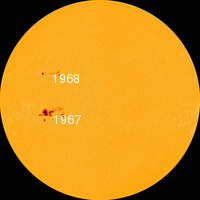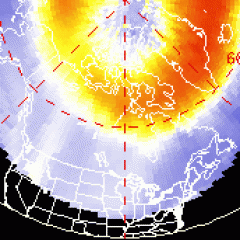~ Space Weather Update~ INCOMING CME, CHANCE OF STORMS [1]
COLDEST SPOT IN THE KNOWN UNIVERSE: NASA engineers are building a refrigerator for the International Space Station that can make atoms colder than anything else in the known universe. Inside this "Cold Atom Lab [2]," researchers hope to discover new forms of matter and novel quantum phenomena. Get the full story [3] from Science@NASA.
INCOMING CME, CHANCE OF STORMS: Big sunspot AR1967 is crackling with solar flares and hurling CMEs into space. The biggest CME so far was propelled away from the sun on Jan. 30th by an M6-class [4] explosion in the sunspot's magnetic canopy. It is expected to reach Earth on Feb. 2nd:
The blast was not squarely Earth-directed. Instead, it will deliver a glancing blow to our planet's magnetic field. NOAA forecasters estimate a 45% chance of polar geomagnetic storms when the cloud arrives on Sunday. High-latitude sky watchers should be alert for auroras. Aurora alerts: text [6], voice [7]

Solar wind
speed: 340.6 km/sec
density: 2.2 protons/cm3
explanation [8] | more data [9]
Updated: Today at 2007 UT
X-ray Solar Flares
6-hr max: C3 1401 UT Feb01
24-hr: M3 0723 UT Feb01
explanation [10] | more data [11]
Updated: Today at: 2000 UT
![]()
Daily Sun: 01 Feb 14
Sunspot AR1967 has a 'beta-gamma-delta' magnetic field that harbors energy for X-class [4] solar flares. Credit: SDO/HMI
![]()
Sunspot number: 87
What is the sunspot number? [13]
Updated 31 Jan 2014
Spotless Days
Current Stretch: 0 days
2014 total: 0 days (0%)
2013 total: 0 days (0%)
2012 total: 0 days (0%)
2011 total: 2 days (<1%)
2010 total: 51 days (14%)
2009 total: 260 days (71%)
Update 01 Feb 2014
The Radio Sun
10.7 cm flux: 166 sfu
explanation [14] | more data [15]
Updated 01 Feb 2014
![]()
Current Auroral Oval:
Switch to: Europe, USA, New Zealand, Antarctica
Credit: NOAA/POES
![]()
Planetary K-index
Now: Kp= 1 quiet
24-hr max: Kp= 1 quiet
explanation [17] | more data [18]
Interplanetary Mag. Field
Btotal: 5.0 nT
Bz: 3.7 nT south
explanation [19] | more data [20]
Updated: Today at 2007 UT
![]()
Coronal Holes: 01 Feb 14
There are no large coronal holes on the Earthside of the sun. Credit: SDO/AIA.



